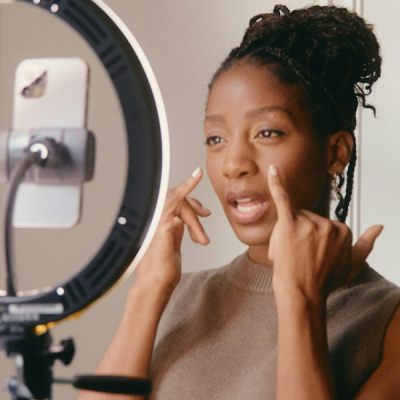Velocity is the New Veracity
Truth is no longer determined by factual accuracy, but by the number of ‘likes’ and ‘shares’
Roger Darashah
Last night (25 October ’18) I was a panelist at CII’s Critical Dialogue series: “Marketing in a Post Truth World’, the entire event which featured amongst others Bhaskar Das, Executive President of the Dainik Bhaskar Group, Shuvadip, Vice President Marketing, ITC, and hosted by Ninad Karpe, Chairman of CII’s programme, was incredibly current and relevant.
One particular insight from Rohit Khanna, Raymond Ltd’s Head of Corporate Communications, resonated: today, credibility is linked more to the volume generated by a particular point of view, than its basis in objective fact. An opinion endorsed by millions of followers – particularly on social media – becomes de-facto fact by virtue of the same. Validation has been replaced by social media analytics.
My view is that truth is as important today as a decade ago (or pre-Twitter), it’s just that the criteria we apply to verify factual accuracy has changed. Today, truth means Wikipedia, or a social media trend, or a celebrity endorsement . . . . A single Tweet from pop singer Taylor Swift is attributed to be behind over 65,000 new voter registrations in the US in just 24 hours; that’s more than Vote.org registered during the entire month of August!
I’m not suggesting any factual inaccuracy in the above case, but the power of an opinion expressed by a particular influencer on a particular moment. In essence, today’s truth formula resembles this: opinion + massive propagation = fact.
However, if the idea of ‘fake news’ terrifies brand marketing managers, PR professionals will be less alarmed; we have always dealt in the realm of opinion, inference, nuance and ambiguity. Our skills are based on the application of logic, argument, data, emotion, relationships, credibility . . . storytelling . . to convey and defend particular point of view. Now, with multiple version of ‘the truth’ in circulation it seems that such skills are in more demand than ever.
I’ve already written about what ‘post truthisim’ means for the media (good news for reputable journalists), and how celebrity trumps veracity in the short term (the Di Miao effect), but yesterday’s discussion revealed another trend that must be resisted at all costs. The ‘fake news’ terminology represents a fantastic absolution for brands to address detractors, those who hold alternative opinions, or investigative journalists who uncover stories (that may be based on fact) which a brand would prefer to remain hidden. The danger is that in condemning all such occurrences as ‘fake news’ brands risk doing a disservice to the media, their consumers, other audiences and, even, themselves.
Here’s the check list I apply, when confronting cases of alleged fake news:
- Not fake news:
- Facts which we preferred remained confidential, but which are now in the public domain
- Differences of opinion
- Viewpoints that don’t particularly suit the brand
Sorry, irritating as the above may be to a brand, they do not constitute factual inaccuracies or mis-representations; my counsel will always be to resort to the magic arts of PR (persuasion, relationships, data points, third part influencers etc) to convey your preferred point of view.
- Potentially fake news
- Factual inaccuracy (corroborated through the use of public data)
- Omission; where the brand has not been given the chance to respond or contribute to the article that concerns it
- Subject opinion presented as fact (journalists are perfectly entitled to a personal point of view, but it should be presented as such)
In such instances, a variety of techniques and instruments can be applied, from leveraging senior relationships, to legal recourse. In my experience, the majority of ‘fake news’ instances brought to my attention fall into category A.; in such instances, it crucial to verify the same with the client before proposing a source of action.
Much conversation during the evening focused on identifying and identifying potential areas of risk; from media and social media monitoring to verifying the background and motivations of particular detractors. All important and relevant. However, the latter is no substitute for building relationships with key stakeholders before the occurrence of any incident.
The best way to insulate a brand from factual inaccuracies and unsubstantiated allegations is to create a rapport with audiences that encourage them to give you the benefit of the doubt; at least as a starting point. This is the essence of ‘good will’; a tangible and quantifiable business asset that can help mitigate such risks.
The phenomenon of fake news is becoming ubiquitous across India. The best weapons to address its effects are: first to recognize fake news (B.) from its more benign alternatives (A.), and second to establish a genuine complicity with your stakeholders (from consumers and employees, to shareholders and regulators). In the event of an outbreak of mis- or dis-information, these stakeholders will start from a neutral or, even, positive viewpoint about the brand. A crucial advantage in the battle against fake news.













